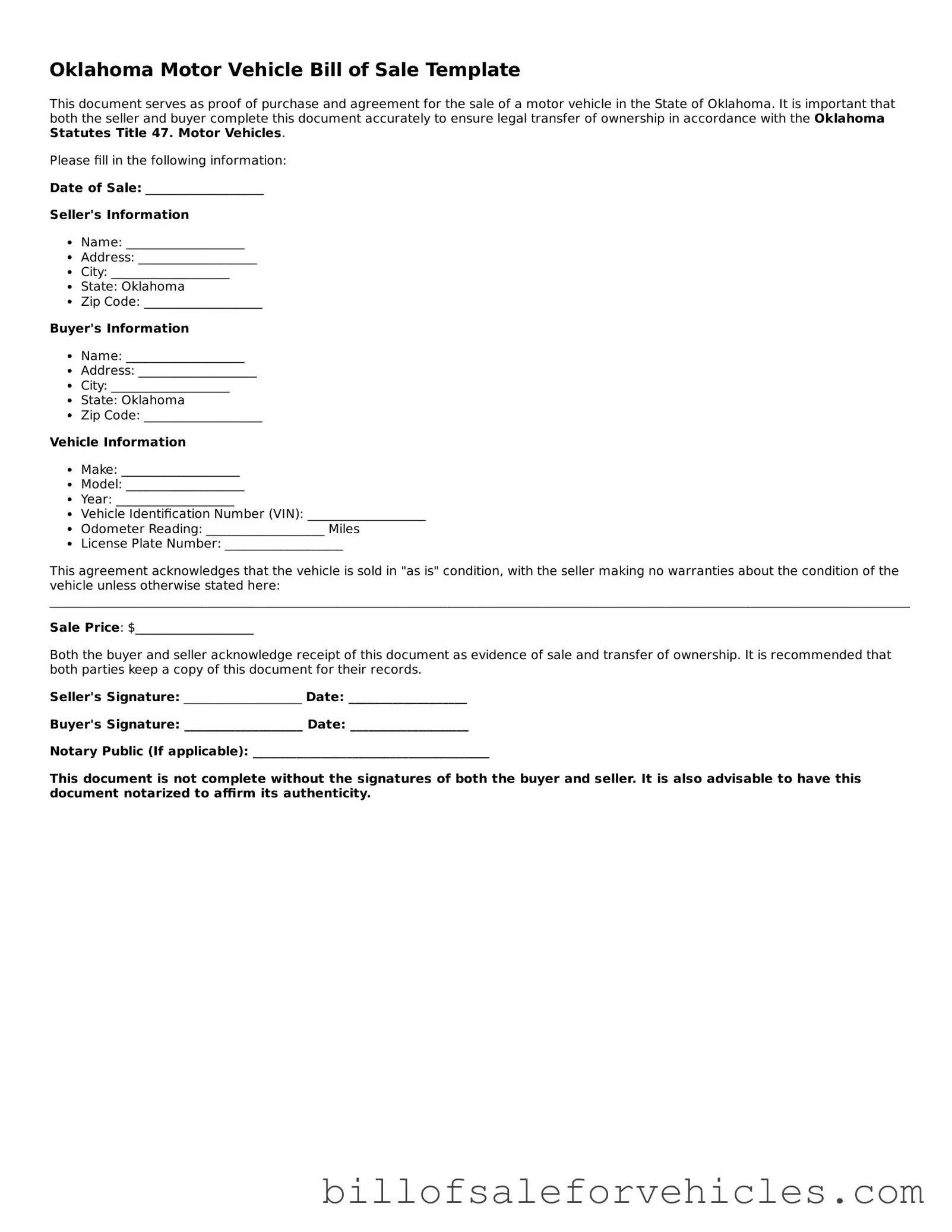Oklahoma Motor Vehicle Bill of Sale Template
This document serves as proof of purchase and agreement for the sale of a motor vehicle in the State of Oklahoma. It is important that both the seller and buyer complete this document accurately to ensure legal transfer of ownership in accordance with the Oklahoma Statutes Title 47. Motor Vehicles.
Please fill in the following information:
Date of Sale: ___________________
Seller's Information
- Name: ___________________
- Address: ___________________
- City: ___________________
- State: Oklahoma
- Zip Code: ___________________
Buyer's Information
- Name: ___________________
- Address: ___________________
- City: ___________________
- State: Oklahoma
- Zip Code: ___________________
Vehicle Information
- Make: ___________________
- Model: ___________________
- Year: ___________________
- Vehicle Identification Number (VIN): ___________________
- Odometer Reading: ___________________ Miles
- License Plate Number: ___________________
This agreement acknowledges that the vehicle is sold in "as is" condition, with the seller making no warranties about the condition of the vehicle unless otherwise stated here: __________________________________________________________________________________________________________________________________________________________________________________________
Sale Price: $___________________
Both the buyer and seller acknowledge receipt of this document as evidence of sale and transfer of ownership. It is recommended that both parties keep a copy of this document for their records.
Seller's Signature: ___________________ Date: ___________________
Buyer's Signature: ___________________ Date: ___________________
Notary Public (If applicable): ______________________________________
This document is not complete without the signatures of both the buyer and seller. It is also advisable to have this document notarized to affirm its authenticity.
